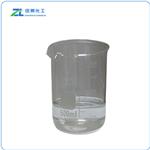Description
Dibutyl sebacate (DBS) is an organic colorless liquid chemical, a dibutyl ester of sebacic acid.Its main use is as a plasticizer in production of plastics, namely cellulose acetate butyrate, cellulose acetate propionate, ethyl cellulose, polyvinyl butyral, polyvinyl chloride, polystyrene, and many synthetic rubbers (especially nitrile rubber and neoprene) and other plastics. It can be used for plastics in use in the food packaging industry, in plastics used for medical devices, and for pharmaceutical applications, e.g. as a plasticizer for film coating of tablets, beads, and granules.[2] It is also used as a lubricant in shaving lotions, and a flavoring additive in non-alcoholic beverages, ice cream, ices, candy, and baked goods. It provides excellent compatibility with a range of plastic materials, superior properties at low temperatures, and good oil resistivity. Its other names include Morflex, Kodaflex, polycizer, Proviplast 1944 and PX 404. Dibutyl sebacate is also used as a desensitizer in Otto fuel II, a torpedo monopropellant.
Application
Dibutyl Sebacate (DBS) provides superior low temperature flexibility properties to a variety of polymers. The low temperature benefits of DBS make it an excellent choice for vinyl food contact films used in refrigeration. It provides excellent compatibility with a range of plastic materials including vinyls, acrylics, nitrile rubber, Buna-n rubber and some cellulosics.
Content analysis
It can be determinated by a non-polar column method in GT-10-4 or by the method I in the ester assay (OT-18). The amount of sample taken was 1 g. The equivalent factor (e) in the calculation is 64.59.
Toxicity
LD50 14470 mg/kg (rat, oral).
Maximum level
FEMA (mg/kg): soft drinks 4.1; cold drinks 9.1; candy 21; baked goods 41; pudding class 3.2 to 19.
Uses
A permitted flavoring listed in GB 2760-96. Mainly used in the preparation of grapes, pears and other flavors and fruit flavor solvent. In addition, it is often used as plasticizer for resin and vinyl resin as its better compatibility with nitrocellulose and butyl acetate cellulose. It can also be used as synthesis solvent for organic synthesis, solvents and pigments, pharmaceutical intermediates and polymers compound.
Production method
It is derived by esterification of succinic anhydride and ethanol; It can also be obtained through heating esterification of sebacic acid and ethanol in the presence of concentrated sulfuric acid.
References
1.https://en.wikipedia.org/wiki/Dibutyl_sebacate
2.http://www.vertellus.com/products/plastics-polymers/morflex-plasticizers-sebacates-and-solvents/dibutyl-sebacate
Chemical Properties
Dimethyl sebacate has a melon, wine, fruity, quince aroma.
Chemical Properties
Diethyl sebacate is a clear colourless liquid or oily liquid. Solidifies in the cold,
melts at 1.5° C. B.P. 306° C. (decomposition
of the ester). Sp.Gr. 0.97. 0.15% soluble in water, soluble in alcohol
and oils. Faint, but pleasant, winey-fruity odor, resembling that of Quince and Melon.
Uses
Diethyl Sebacate is a flavoring agent that is a liquid, colorless to
pale yellow in appearance with a slight odor. it is insoluble in water
and miscible in alcohol, ether, and other organic solvents. it is
obtained by chemical synthesis. it is also termed ethyl sebacate.
Definition
ChEBI: Diethyl decanedioate is a fatty acid ester. It is the diester of ethyl alcohol and Sebacic Acid that used as an aromatic in food.
Preparation
Diethyl sebacate is obtained by heating sebacic acid and ethanol in the presence of concentrated H2SO4 or other acid catalysts.
General Description
Diethyl sebacate is a volatile organic compoind used as a flavoring agent. It is reported to be found in longan honey porduced by
Apis cerana.
Health effects
Diethyl sebacate is reported to be used in cosmetics at 1.5%, and no irritation or sensitization was reported in clinical studies of a formulation containing 1.5% diethyl sebacate.
Flammability and Explosibility
Not classified
Contact allergens
This emulsifer has rarely been reported as a sensitiz-
ing agent, mainly in topical treatments.
Safety Profile
Mildly toxic by
ingestion. A skin irritant. See also ESTERS.
When heated to decomposition it emits
acrid smoke and irritating fumes.






